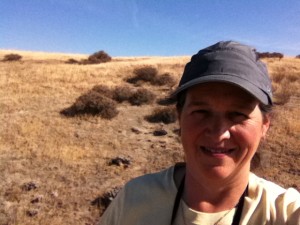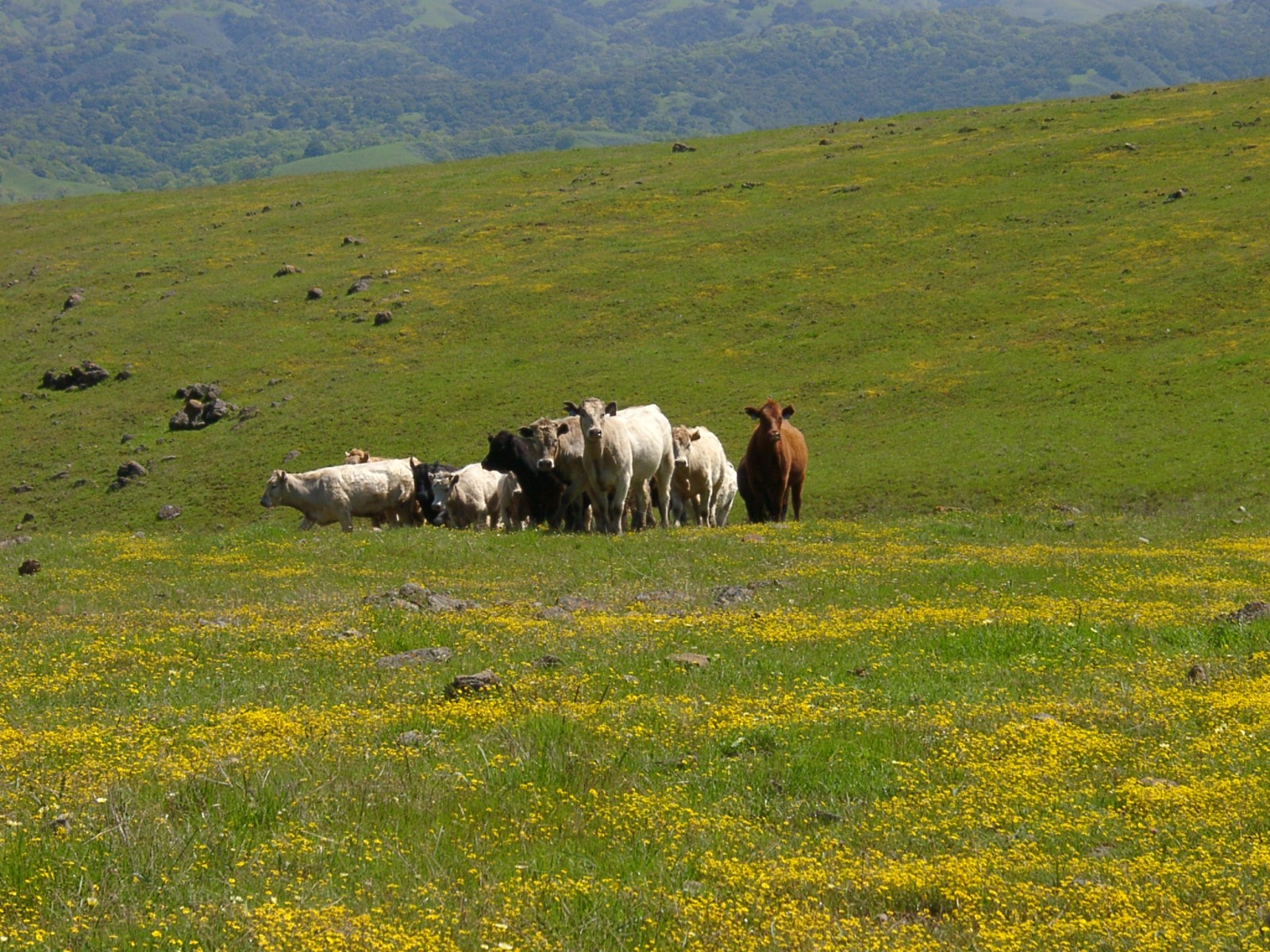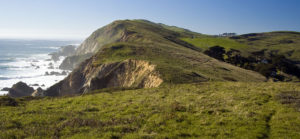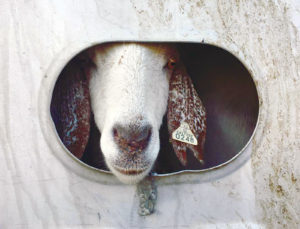We expect our grasslands and oak woodlands to support habitat for wildlife, to collect and store water, to sequester carbon, to support pollinators and to provide recreational opportunities. We also need to minimize the risks of wildfire on these lands near urban development. Grazing and associated rancher stewardship belongs on public lands with grassland and/or oak woodland because it is not only compatible with these objectives but also key to realizing most of them.

Over the past 250 years California’s grasslands and oak woodlands, whether in private or public ownership, grazed or not, have become dominated by non-native annual plants. These plants were introduced by European arrival and are native to parts of Europe and Asia that share California’s Mediterranean climate. They include grasses, such as wild oats, Italian rye grass and soft chess as well as forbs (broad-leaf plants), such as filarees and black mustard. Unless reduced by fire, grazing, or mowing, these non-native grasses and forbs produce huge amounts of biomass, often over two tons per acre per year, that becomes a dense tangle of dead vegetation (called thatch) crowding out native plants and degrading habitat for native animals.
Grazing is the most effective and efficient tool to manage these non-native annuals in our grasslands and oak woodlands. Cattle generally favor the non-native grasses and forbs over native plants. One cow will consume approximately 27 pounds of grass and forbs (dry weight) per day, or almost five tons per year. Removing this biomass creates essential growing space (short grasses, grasses of various heights and bare ground) for native plants and animal habitats. Preventing the thatch from accumulating maintains water quality by reducing the addition of excess nutrients to our water supply. Grazing promotes flowering plants that support a variety of pollinators. Optimizing growing opportunities for plants maximizes their potential to sequester carbon.


Concerns with grazing on public lands have focused on overgrazing and impacts to riparian woodlands. These are legitimate concerns, but have been effectively addressed with modern range management practices, such as maintaining proper stocking rates, creating riparian pastures, limiting grazing in sensitive areas and adding off-stream water sources. Also, the stewardship provided by ranchers on public lands is a significant benefit that is often overlooked. Ranchers pick up trash, watch for wildfires, talk to and help visitors, repair fences, roads and trails, and report problems at a time when budgets for park rangers and maintenance are reduced.
It is clear our climate is changing and we are facing an unprecedented water shortage in California. Despite statements that cattle production uses enormous amounts of water, the beef cattle grazing nearly 40 million acres of grasslands and oak woodlands in California do not. They graze plants growing naturally, without any irrigation. Grazing can maintain water yield by suppressing brush and maintaining grasslands. The stockponds and springs developed for livestock water also benefit wildlife including some endangered species. To refuse to use livestock grazing and rancher stewardship to manage vegetation on public lands like Mt Diablo and Henry Coe State Park not only puts numerous native grassland species at risk, but also limits our ability to sequester carbon, and mitigate impacts from climate change. A sustainable grazing operation is the most effective and efficient way to consistently manage California’s grasslands and oak woodlands on a landscape scale.
Sheila Barry serves the San Francisco Bay area as a Natural Resource and Livestock Advisor for the University of California Cooperative Extension. For the past 20 years, she has been conducting applied research and extending information on grassland and oak woodland management as a Cooperative Extension Advisor. She works with cattle ranchers and public agencies to promote working landscapes that conserve biological diversity and protect water quality. Sheila has a Master’s degree in Animal Science from Texas A&M University and Bachelor’s degrees in Agricultural Science and International Relations from University of California Davis. Sheila is licensed by the State of California as a Certified Rangeland Manager.
References
Allen- Diaz, B. et al.2004. Long-term grazing study in spring-fed wetlands reveals management tradeoffs. California Agriculture 58 (3): 144-143.
Bartolome, J. W., and B. Gemmill. 1981. Ecological status of Stipa pulchra (Poaceae) in California. Madrono 28:172–184.
Bartolome, J., B. Allen-Diaz, S. Barry, L. Ford, M. Hammond, P. Hopkinson, F. Ratcliff, S. Spiegal, and M. White. 2014. Grazing for biodiversity in Californian Mediterranean grasslands. Rangelands 36(5): 36-44.
Burcham, L. T. 1957. California range land: An historico-ecological study of the range resources of California. Sacramento, CA: Division of Forestry, Dept. of Natural Resources, State of California.
Constable, J. L., B. L. Cypher, S. E. Phillips, and P. A. Kelly. 2009. Conservation of San Joaquin kit foxes in western Merced County, California. California State University-Stanislaus, Endangered Species Recovery Program, Fresno, California.
Dahlgren, R.A. et al. 2001. Watershed research examines rangeland management effects on water quality. California Agriculture 55:6:64-71.
Davis, L. H., and R. J. Sherman. 1992. Ecological study of the rare Chorizizanthe Valida (Polygonaceae) at Point Reyes National Seashore, California. Madrono 39(4):271–280.
DiGaudio, R. 2010. Grassland bird monitoring at the Jenner headlands: A report of the 2010 field season. PRBO Conservation Science report. Petaluma, CA.
Ford, L. D., and G. F. Hayes. 2007. Northern coastal scrub and coastal prairie. Chapter 7 in: M. G. Barbour, T. Keeler-Wolf, and A. Schoenherr (eds.), Terrestrial Vegetation of California, Third edition. Berkeley: University of California Press.
Ford, L. D., P. A. Van Hoorn, D. R. Rao, N. J. Scott, P. C. Trenham, and J. W. Bartolome. 2013. Managing rangelands to benefit California red-legged frogs and California tiger salamanders. Alameda County Resource Conservation District, Livermore, California.
Germano, D.J., G.B. Rathbun, and L.R. Saslaw. 2001. Managing exotic grasses and conserving declining species. Wildlife Society Bulletin 29(2):551-559.
Hayes, G. 1998. The saga of the Santa Cruz tarplant. Four Seasons, 10(4):18–21.
Hayes, M. P., and M. R. Jennings. 1988. Habitat correlates of distribution of the California red-legged frog (Rana aurora drytonii) and the foothill yellow-legged frog (Rana boylii): Implications for management. General technical Report, RM-Rocky Mountain Forest and Range Experiment Station, US Department of Agriculture, Forest Service.
Heady, H. F. 1977. Valley grassland. In M. Barbour and J. Major (eds.), Terrestrial Vegetation of California. New York: J. Wiley. Pp. 491–514.
Hendry, G. W. 1931. The Adobe brick as a historical source: Reporting further studies in adobe brick analysis. Agricultural History 5(3):110–127.
Huntsinger, L., J. W. Bartolome, and C. M. D’Antonio. 2007. Chapter 20: Grazing management of California grasslands; pages 233–253 in J. Corbin, M. Stromberg, and C. M. D’Antonio (eds.), Ecology and Management of California Grasslands. Berkeley: University of California Press.
Murphy, D. D., and P. R. Ehrlich. 1989. Conservation biology of California’s remnant native grasslands. In F. L. Huenneke and H. Mooney (eds.), Grassland structure and function: California annual grassland. Dordrecht: Kluwer. Pp. 201–212.
Nader, G., Z. Henkin, E. Smith, R. Ingram, and N. Narvaez. 2007. Planned herbivory in the management of wildfire fuels. Rangelands 29(5):18–24.
Pyke, CR and J. Marty. 2005. Cattle grazing mediates climate change impacts on ephemeral wetlands. Conservation Biology 19:1619-1625.
Rao, D., S. Gennet, M. Hammond, P. Hopkinson, and J. Bartolome. 2008. A landscape analysis of grassland birds in a walley grassland-oak woodland mosaic. Pp. 385–397 in A. Merenlender, D. McCreary, and K. Purcell (tech. eds.), Proceedings of the sixth California oak symposium: Today’s challenges, tomorrow’s opportunities. USDA Forest Service, Gen. Tech. Rept. PSW- GTR-217.
Russell, W. H., and J. R. McBride. 2003. Landscape scale vegetation-type conversion and fire hazard in the San Francisco bay area open spaces. Landscape and Urban Planning 64:201–208.
Stechman, J. V. 1983. Fire hazard reduction practices for annual-type grassland. Rangelands 5(2).
United States Fish and Wildlife Service (USFWS). 2009. Bay checkerspot butterfly (Euphydryas editha bayensis) 5-Year review: Summary and Evaluation. August 2009. 42 pp.
United States Fish and Wildlife Service (USFWS). 2005. Recovery plan for vernal pool ecosystems of California and Southern Oregon. Portland, OR.
United States Fish and Wildlife Service (USFWS). 2004. Endangered and threatened wildlife and plants: Determination of threatened status for the California tiger salamander; and Special rule exemption for existing routine ranching activities; final rule. April 4, 2004. Federal Register 69:47212–47248.
United States Fish and Wildlife Service (USFWS). 2003. Endangered and threatened wildlife and plants: Listing of the central California distinct population segment of the California tiger salamander; proposed rule. Federal Register 68:28648.
Weiss, S. 1999. Cars, cows, and checkerspot butterflies: Nitrogen deposition and management of nutrient poor grasslands for a threatened species. Conservation Biology 13(6):1476–1486





